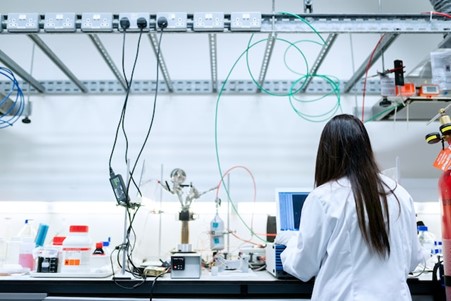Yingyan Huang of Northwestern is an entrepreneur in the technology industry, who stays up to date with various technological advancements making their way into our reality. In the following article, Yingyan Huang discusses the breakthroughs in the field that will change the way we live and work in the future.
The world is already beginning to feel like something straight out of a Philip K. Dick novel. But the genius minds forefronting these revolutionary technologies are far from finished. Despite humanity's future looking less-than-positive in some areas, breakthrough methodologies and equipment are showcasing just how amazing it could be.
From a one-size-battles-all flu shot to human-computer interfaces to smartphone blood tests to extended reality, advanced technologies are moving from the R&D sector to the main market at a rapid pace, creating the new tomorrow most people are wishing for.
Yingyan Huang Explains the Transformative Capabilities of Human-Computer Interfaces
Fitness tracker bands are perhaps the most popular human-computer interfaces (i.e., wearable devices and tech that enhance human's daily mental and physical performance) used in the developed world today. All wearers need to do is strap it on and go about their day to receive activity analysis and insights into how they can improve their health and productivity.
But the term “wearable” is changing as fast as the technology is advancing. It isn't just about watches, rings, or other devices attached to the body; it encompasses smart clothing, robotic prosthetics, and robotics worn in industrial settings.
Yingyan Huang of Northwestern explains that these devices are becoming smarter and smaller, eradicating the clunkier versions most are aware of today. For instance, smart glasses already exist, but experts state they'll be able to upgrade to contact lenses surprisingly quickly.
Such advances lead theorists to assume that machines and humans will eventually merge, with bodies enhanced beyond comprehension and a forever-changed medical field. Ultimately, it could reinvent what it means to be a human being all together.
One Flu Shot, All Strains
Yingyan Huang of Northwestern says that recently, researchers at the University of Pennsylvania's medical school created and tested a
universal flu shot — a feat which has the power to transform people’s lives.
Currently, scientists know of about 20 flu strains. And as each season comes around, they tailor vaccines to protect people from the year's predicted variety. But when these predictions aren't accurate, the efficacy of the vaccines drastically decreases.
The universal flu shot could eradicate this downfall.
Yingyan Huang of Northwestern explains that researchers used mRNA technology to create the vaccine, ensuring the shot's genetic data encodes for protein fragments discovered on the surface of each flu strain. After testing, the scientists found the shot was 100% effective against flu viruses with proteins the matched closely to the encoded ones and 80% effective against strains with different variants — much better statistics than the 40%-50% efficacy of today's current vaccine.

 The iBloodtest for Straightforward At-Home Testing
The iBloodtest for Straightforward At-Home Testing
University of Washington researchers made a blood clotting test that necessitates just two things: a smartphone and a drop of blood.
Yingyan Huang of Northwestern reports that those with heart conditions must monitor coagulation with numerous, frequent clinic visits. But these machines haven't changed for two or three decades. Smartphones have; they include vibration motors, sensors, and cameras, which have the power to improve patient outcomes and save the lives of those who are yet to be diagnosed.
According to the design, the method is wonderfully straightforward. A patient pricks their finger and puts the drop of blood into a tiny cup. This cup then fits into an attachment under the phone's camera lens, which vibrates while the camera tracks the movement of the floating copper fragment. When it no longer moves freely, the blood has then coagulated.
The Revolutionary Theranostics for a Future of Precision Medicine
Yingyan Huang of Northwestern reports that prostate cancer theranostics starts with radioisotope production for utilization in diagnostic tracers which attaches to the patient's cancer cells, releasing radioactive emissions to offer person-specific molecular information. While this technology is already widely used, a new Solid Target Platform produces 100 times more radioisotopes than a common generator, boosting the access of theranostics capacities for clinicians and patients.
Advancing this area of medicine is necessary for the longevity of the human race. And in recent years, even more leaps forward have been made, thanks to the FDA approval of lutetium-177 PSMA-617, a therapy for advanced prostate cancer. It binds to and delivers a pre-determined amount of radiation to prostate cancer cells in the body (regardless of where they are), increasing patients' lifespans and boosting their quality of life.
Yingyan Huang of Northwestern explains that to know whether it's having the desired effect, clinicians need a highly advanced system. Luckily, this has already been created. The StarGuide SPECT/CT contains digital focus detector tech, which scans patients in 3D to offer in-depth information to clinicians, allowing them to provide better treatment going forward.

 The iBloodtest for Straightforward At-Home Testing
The iBloodtest for Straightforward At-Home Testing